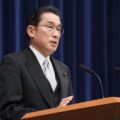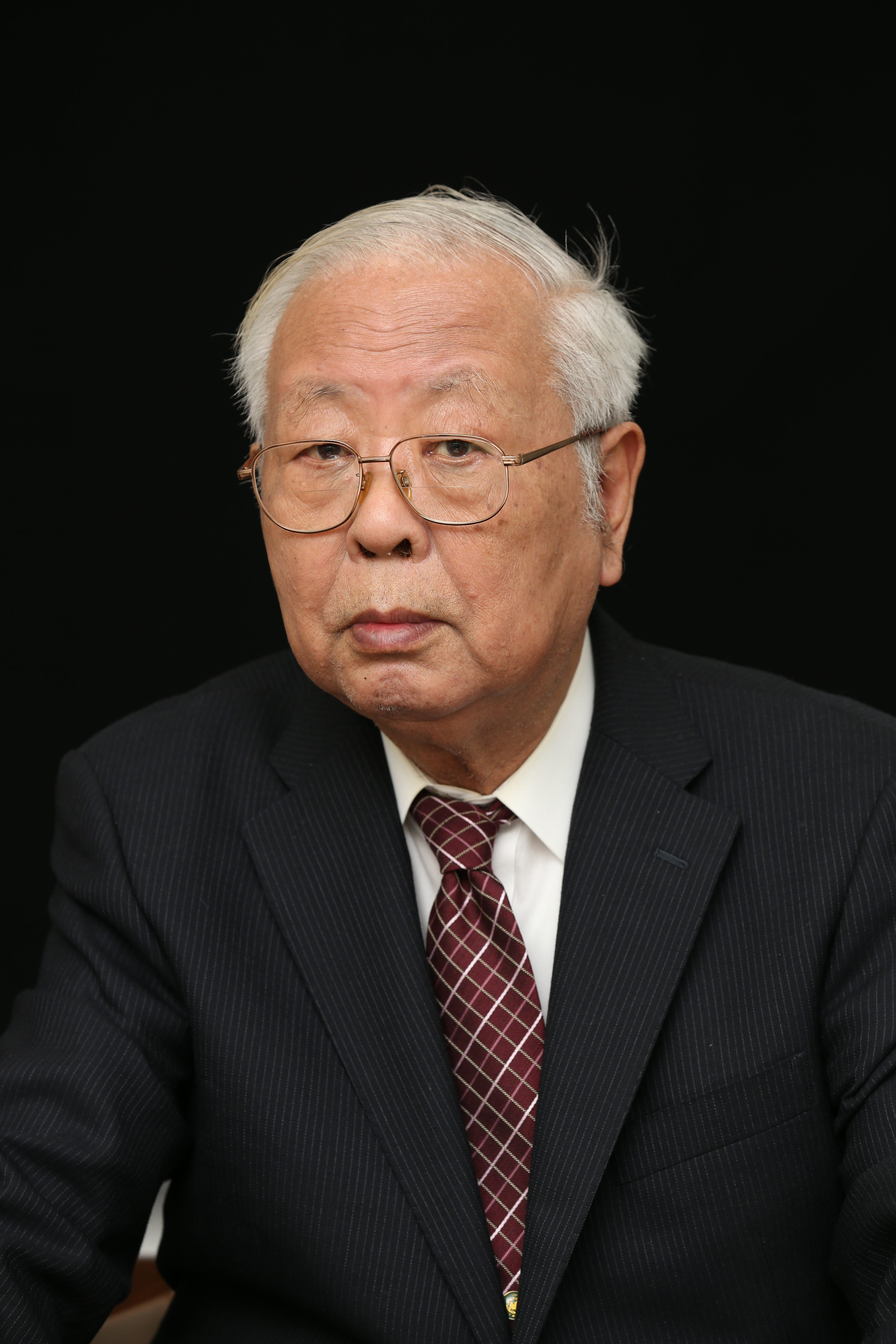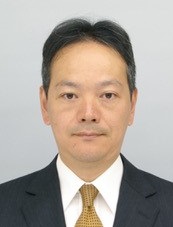Politics that Fled the Nuclear Issue: The “Dogmatization” of Decarbonization Invites an Energy Crisis!
Takeuchi Sumiko, Member of the Board of Directors, Senior Fellow, International
Environment and Economy Institute

Takeuchi Sumiko
The “decarbonization” trend is accelerating around the world. It has been reported that countries will discuss global warming countermeasures based on the Paris Agreement adopted in 2015 at the 26th session of the Conference of the Parties to the United Nations Convention on Climate Change (COP 26), planned to be held in the UK in November 2021, with new Prime Minister Kishida Fumio and the leaders of other countries expected to be in attendance (as of the end of October of 2021). The host country UK is fairly actively calling on countries to participate, but no Chinese and Russian leaders are planning to participate.
Former Prime Minister Suga Yoshihide announced “carbon-neutrality” and a “decarbonized society” by 2050 in 2020. Further, in April 2021, he stated that Japan would “reduce its greenhouse gas emissions by 46 percent in fiscal year 2030 from the fiscal year 2013 levels.” The Kishida administration basically plans to continue this policy. Japan’s energy policy is at a major turning point right now.
I worked for Tokyo Electric Power Co., Inc. (TEPCO) for 18 years and have been making recommendations for energy policy from an independent standpoint after leaving the company. As a person involved in the electric power business, I would like to offer a consumer and field perspective, which tends to be lacking in the energy policy debate. From this perspective, I think that the current discussion is too idealistic while too little is said about the burdens and risks that the people have to shoulder.
Firstly, the fact that Japanese government advocates “carbon-neutrality” is itself very positive, and it is very meaningful that we can share the vision of a decarbonized society with the world.
However, the realization of carbon-neutrality is a “major revolution” bigger than the industrial revolution. It is 30 years to 2050 and fewer than 10 years to 2030. Converting energy infrastructure takes a very long time. In addition, while we tend to focus on power generation methods, electricity actually makes up about 30% of total energy. Seventy percent is energy directly obtained by burning gasoline, gas, etc. To achieve carbon reduction in this, we need to advance electrification and at the same time decarbonize electric power sources. Major changes to lifestyle and industrial structure, including electrification, are needed, so I have to say that although the direction is correct, we really do not have much time.
In the international negotiations on global warming, the focus tends to be on a competition of who has the biggest carbon reduction targets, yet promises are powerless before reality. Even if we proceed with decoaling for the sake of climate change measures, if we face a power shortage in reality, we have no choice but to produce more or buy more coal.
Focus on the Three “Es”
Innovation is necessary if we are aiming for a decarbonized society, but it does not mean the creation of entirely new technologies that do not exist now. In Japan, innovation and invention are often discussed interchangeably, but if we can reduce the cost of renewable energy by 20–30% through innovation, the business model around electric power will change completely.
Climate change is not an environmental issue, but energy and economic issues. Until now, there has existed a strong coupling between environmental conservation and economic growth, meaning the amount of carbon dioxide emissions and GDP. We need to sever this link and obtain energy that is lower-carbon than what we use now as well as energy technology that can provide it cheaply and stably to achieve both economic growth and conserving the environment.
In this sense, the current discussion on energy policy in Japan does not pay enough attention to economic and security issues.
The basis of energy policy is the three “Es.”
- Energy Security (securing a stable supply)
- Environment (environmental suitability)
- Economy (economic efficiency)
Energy policy needs to be aware of this “triangle” consisting of these elements. To make policy sustainable and minimize the risks the public faces, we need to advance the discussion while balancing the three Es well.
The Solar Power Industry Is a Mixture of the Good and Bad
Now, I would like to talk about individual power generation methods.
I would surmise that most attention is currently paid to renewable energy that does not emit greenhouse gas. That includes solar power, wind power, geothermal power, biomass, and small hydropower.
On October 22, the Japanese government revised the “Sixth Strategic Energy Plan” for the first time in three years and adopted it with a Cabinet decision. The breakdown for 2030 is a rate of renewable energy of 36–38% of the total power generation, with 20–22% nuclear and 19% coal. The goal for renewable energy is to double the current level and make it a main power source.
There are various approaches to renewable energy, but it generally takes at least eight years to develop wind and geothermal, so it really comes down to how much solar power generation we can introduce. However, I cannot be optimistic about its spread in the future.
In fact, Japan boasts the world’s third largest volume of solar power generation after China and the United States. We are by far the best in the world when we take into consideration land area and flatland area. The “feed-in tariff” (FIT) scheme introduced by the government in 2012 is the reason for this spread. Electric power companies are obligated to make fixed price purchases of electricity generated from renewable energy sources such as solar power [wind and hydropower] over a long period of 20 years.
The price difference between the average electricity of electric power companies and the still expensive electricity generated from renewable energy is for “supporting costs for renewable energy” and is taken from consumers together with the electricity bill [FIT surcharge]. It is now about 2.4 trillion yen per year, so that an average household pays more than 10,000 yen per year. Some call this “an investment in the future,” but a lot has just been inflated by the unnecessarily high purchase price (tariff). From the point of view of introducing sustainable renewable energy, we should think about how to minimize this burden without misrepresentation.
The amount of land suitable for solar panels installation is decreasing. Proper development is needed on roofs and parking lots. My biggest concern is that rural solar power generation will become “nuisance facilities.” The FIT scheme allows a lot of random development of investment projects, rather than solar power generation suitable for the region as an energy business. The idea of utilizing neglected farmland will lead to the disappearance of “satoyama” (an area consisting of farmlands, ponds, secondary forest, plantation forest, and grasslands around human settlements). It is necessary to proceed with electric power development that is useful for the region, so as not to repeat the failures that have occurred with the FIT scheme.
Another thing needed is the perspective of industrial soundness. In addition to policy recommendations, I have created a company to support businesses involved in renewable energy, but I feel that the current solar power generation industry is a mixture of the good and bad. The crude subsidy system makes no distinction between businesses that are serious about providing consumers with renewable energy as cheaply and conveniently as possible and those that do not. Without a market where “the good” is polished and allowed to survive, we will end up supporting a renewable energy industry of “the bad” that comes at the consumers’ expense.
Solar power generation can generate electricity very close to where it is consumed. We need to carefully examine and disseminate synergies with other industries such as the second-house housing market, housing equipment, and roof construction. We should not just wait for government subsidies, but industries should also develop survival strategies. Renewable energy, including solar power generation, does not rely on fossil fuels and does not emit greenhouse gases. However, there are drawbacks as well.
Known as the naturally swinging electric power supply, the amount of power generated depends on the weather. The average operating rate of solar power generation in Japan is about 12%. It would be good if it were a stable 12%, but there is no way of knowing when power will be generated.
With electricity, the amount generated must instantly match the amount consumed. It may be called “the ultimate perishable product” for which no stock can be kept. In many cases, it is not possible to say “use the power later because there is not enough now.” We need electric power sources that can generate power reliably even when renewable electricity generation is not available or that can adjust and coordinate according to shifts in renewable energy. Of course, storage batteries and hydrogen are technologies that make possible electricity “stock,” so they can compensate for the shortcomings of renewable energy if introduced in large quantities. The key issue is how to compensate for the shortcomings, reduce total cost, and expand renewable energy.
For solar panels, we are mostly dependent on imports from China and other countries, and we need to consider measures to tackle issues like disposal and recycling.
“Variety” Is Important for Energy
There is no energy source without faults. Former British Prime Minister Winston Churchill said the following.
“Safety and certainty in oil lie in variety and variety alone.”
At that time, the context was oil, but this is a basic tenet of energy policy. As Churchill says, the key to energy security is “variety.” You never know when something might happen, so all options need to be left open without bias toward a single electric power source. There is nothing wrong with focusing investments on promoting solar power generation, but if you go too far and sacrifice variety, you are digging your own grave.
Ideal and Reality Advocated in Politics
Utilization of nuclear power generation is an aspect of energy policy that divides public opinion in Japan. Since the Fukushima Daiichi nuclear accident due to the Great East Japan Earthquake, distrust of nuclear power generation has increased, and the pros and cons of nuclear power were also debated during the Liberal Democratic Party presidential election in the fall of 2021.
Looking back at history, Japan established the Atomic Energy Basic Law, which signaled the start of nuclear power generation, exactly 10 years after the end of the war in 1955. It was at a time when memories of the atomic bombings of Hiroshima and Nagasaki remained strong, and people were very sensitive to words like kaku (nuclear) and genshiryoku (nuclear power). It is true that there was a campaign by the United States that military use and peaceful use are completely different and that the newspapers accommodated this, but the reason for Japan’s step to introduce nuclear energy was a strong craving for energy. In order to achieve postwar reconstruction, a large amount of inexpensive electricity was needed. In 1966, the Tokai Power Station, built by the Japan Atomic Power Co. at Tokai Village in Ibaraki Prefecture, became the first commercial nuclear power plant in Japan. By the mid-1980s, nuclear power generation accounted for about 30% of Japan’s power supply configuration.
I have never been directly involved with nuclear division, but just before the Great Earthquake, I was in charge of the global warming issue and had so many requests from the government to build a nuclear power plant.
I joined TEPCO in 1994. For the first four years, I was assigned to the field, after which I was involved in nature conservation activities at Oze National Park for a decade from 1999.
I then moved on to the environment division in charge of the global warming issue. The Democratic Party of Japan (DPJ) government was inaugurated, and interest in climate change increased. At the United Nations Summit on Climate Change in 2009, immediately after the then Prime Minister Hatoyama Yukio took office, he set an extremely high goal by saying that “Japan will aim to reduce its [greenhouse gas] emissions by 25% by 2020.”
Once the prime minister had announced these numbers on the international stage, the government office had no choice but to fill in the blanks. Unavoidably, setting this goal for 10 years later in 2020 would constitute a lie. Therefore, the Basic Energy Plan [current Strategic Energy Plan] at that time aimed for 2030, specifying a power supply configuration of 20% renewable energy and 50% nuclear. Renewable energy costs were higher than they are now, and the only way to do this was to take advantage of nuclear power. I was stunned by the prerequisite of building nine nuclear reactors by 2020 and 14 or more reactors [including the nine by 2020] by 2030. The gap between the ideal and reality that was advocated by politicians puts the public at risk with an unrealistic energy policy.
45 Years to the Start of Construction
It takes a tremendous amount of time to get local acceptance for nuclear power plant construction. For example, in Higashidori Village, Aomori Prefecture, where TEPCO planned to build the Higashidori Nuclear Power Plant (suspended due to the Great East Japan Earthquake), it required 45 years from village council resolution to the start of construction. In the meantime, the electric power company employees had to grovel and gradually gain trust in areas subject to fishery rights compensation. It is not possible without this accumulation of trust over time.
In 2011, energy policy changed dramatically due to the Fukushima Daiichi nuclear accident. It was unavoidable considering the scale of the accident, but the DPJ administration announced “zero operating nuclear power stations in the 2030s” as a pledge for the House of Representatives election in the year after the Great Earthquake, while the anti-nuclear movement was gaining momentum inside Japan. However, the reason why nuclear power is needed has not gone away. Japan still lacks fossil fuel resources and has to engage in carbon reduction.
There is no doubt that the accident was an impermissible event that deprived many people of their daily lives and happiness, but we end up with other risks if we suddenly drop nuclear power plants to zero. I felt a sense of crisis when no one was mentioning this.
My starting point is that I want to reduce the misfortunes relating to energy, even if by just a little.
Energy is the “blood of daily life.” If the electricity stops, all traffic and communications will stop. It truly is a lifeline.
I felt this firsthand when I was assigned to the field immediately after joining TEPCO. Because it is not a luxury item but directly connected to daily life, a price increase of 500 or 1,000 yen per month can be a life and death problem for vulnerable households, such as elderly people living alone on their pension. Moreover, a power outage causes considerable panic, so that electric power companies are flooded with calls when an outage occurs. Even persons who are usually kind can yell with murderous intent. That is how frightening a power outage is.
What I learned from this experience is that “cost” and “stability” are very important elements of electric power supply. Electricity is taken for granted in Japan. However, considering how scarce resources are in Japan, this really should not be the case. It is the result of securing energy through a variety of means, including resource diplomacy and other initiatives to ensure stable fuel as well as the introduction of nuclear power generation.
This is also the value that we expect to gain from nuclear power generation. Nuclear power generation, which can provide a stable supply of cheap power, can generate stable power for several years after the fuel is loaded and is not affected by events like the oil shocks of the 1970s. Therefore, it is internationally considered a “semi-domestic” energy resource. There is the spent nuclear fuel issue. Technically, there is international recognition that geological disposal is appropriate, but it has the difficult political problem of deciding where to bury it.
We are very dependent on other countries for [fuel for] thermal power generation and it is very sensitive to fuel price fluctuations. Renewable energy costs are rapidly declining due to various technological advances in renewable energy, hydrogen, storage batteries, and so forth. However, another step of maturation is required in terms of integration costs and usability. To ensure security and variety, nuclear power generation will be needed for at least another 20–30 years, I suspect.
Human Resource Development at Risk Due to Shutdowns
Of course, the use of nuclear power must be done with all kinds of safety measures in mind. After the Fukushima Daiichi nuclear accident, the Nuclear Regulation Authority was established and safety regulatory standards for nuclear facilities were raised significantly. It is government policy to have nuclear reactors conform with regulatory standards up and running, but the review process is very slow.
Comparing the nuclear regulations between the United States and Japan, Japan does not have a principle of efficiency. There is the idea that nuclear safety is special, but it is necessary to regain the fundamental principles of governance [prioritizing private activities]. There ought to exist regulations that stimulate ingenuity and progress in the field, such as spontaneous efforts by providers to improve safety.
Nuclear technologies are being innovated around the world, with recent attention being on the next generation of nuclear power called Small Modular Reactors (SMRs). They are smaller in scale than conventional nuclear power plants, greatly reduce costs and construction time, and achieve high safety. They are expected to be a game changer in the nuclear industry.
However, looking at the situation of nuclear regulations in Japan, even if SMRs were technically established in the future, I worry that they will not be utilized well. Again, safety regulations must encourage sound technological development.
Human resource development in the nuclear industry is another big problem.
When writing my book Genpatsu wa anzenka (Nuclear power stations are safe?) (Shogakukan 2017), I went and looked around nuclear facilities across the country, and there was one event that really made an impression on me. When talking to a mid-level employee in their fifth or sixth year of employment at the power company, he said, “I’ve never seen a nuclear station in operation.” Since starting, no nuclear stations have been running and he has just been doing simulation training.
Normally, the technology in the field is passed on through the detection of little troubles and indications as the facilities are operating on a daily basis, such as “Let’s stop it because it sounds a bit off” and “There is no problem if it’s like this.” No know-how is cultivated as long as the nuclear reactor shutdown continues.
In the 10 years since the Great East Japan Earthquake, politics have been evading nuclear issues. As a result, the nuclear industry is in a critical situation. Nuclear power is an indispensable power source for Japan’s climate change measures for the foreseeable future. Now is the time for politics to tackle these issues head-on.
The Monotheism of Renewable Energy
In the end, energy policy is all about “risk management.” Any type of energy is inescapably associated with risks. It is not possible to completely eliminate risks, so the question is how to minimize it. This requires politics and the people to communicate and debate closely.
This year, the world saw the Texas power crisis in February, the tight supply and demand in the UK in September, and other energy crises, all of which offer valuable lessons for Japan. In 2021, Europe was short on electric power supply due to reduced wind-power generation output and soaring natural gas prices. The waves of soaring fuel prices will reach Japan, so it is very much an issue for us as well.
The source of European natural gas is Russia. European countries, which are likely more than wary of dependency on Russia, have knowingly left their lifeline in Russian hands as they expand their use of natural gas because of the urgency of decarbonization as a climate change measure.
The noble ideal “decarbonization” has become dogma, so it is perhaps difficult to immediately get a sense of crisis from this.
The monotheism of renewable energy and hasty debates might yield different risks, thus endangering the sustainability of initiatives anyway.
Climate change is an urgent issue, so we must work to resolve it with theory and technology rather than emotion. I hope to see policies that the people as a whole, including socially vulnerable people and small and medium enterprises, will be able to engage with sustainably.
Translated from “Genpatsu kara Nigeta Seiji: Datsu-tanso no shukyo-ka wa enerugii kiki wo maneku! (Politics that Fled the Nuclear Issue: The “Dogmatization” of Decarbonization Invites an Energy Crisis!),” Bungeishunju, December 2021, pp. 186-193. (Courtesy of Bungeishunju, Ltd.) [January 2022].
Keywords
- Takeuchi Sumiko
- International Environment and Economy Institute
- TEPCO
- global warming
- decarbonization
- carbon-neutrality
- greenhouse gases
- electric power
- nuclear power
- renewable energy
- solar power
- Sixth Strategic Energy Plan
- 2030
- feed-in tariff (FIT)
- satoyama
- Oze National Park
- Fukushima Daiichi
- anti-nuclear
- Nuclear Regulation Authority
- electricity
- lifeline
- innovation
- human resources




